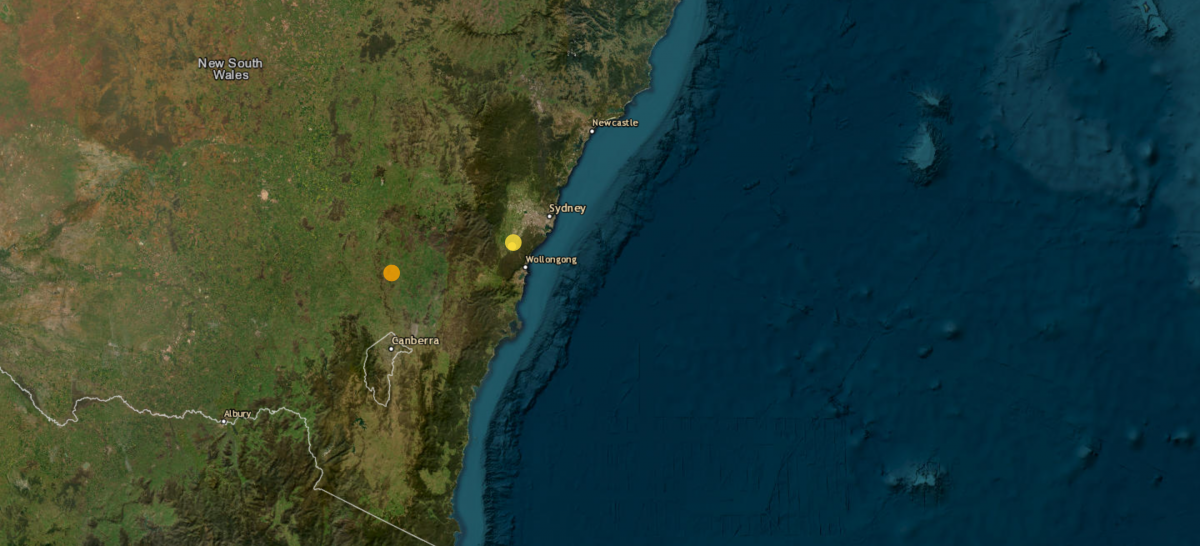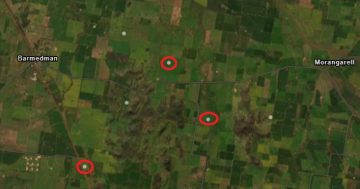
The earthquake, represented by the orange dot above, struck just before 2 am on Friday morning. Photo: Geoscience Australia.
A magnitude 3.2 earthquake has been recorded between Crookwell and Boorowa in the early hours of the morning.
The earthquake struck shortly before 2 am this morning (23 June).
Geoscience Australia Senior Seismologist Doctor Jonathan Griffin said the organisation had received several reports from residents.
“That’s not a massive earthquake, but we’ve received 14 ‘felt reports’ at Geoscience Australia.”
“A number of people have reported they’ve been woken up by it, and also observed the shaking and the noise from the earthquake as well.
“Some have said they’ve heard a sound like thunder or a bang kind of noise,” he said.
Though the shaking and sounds may have woken people from their beds, Dr Griffin said the reports fit what was expected for an earthquake of that size.
“That’s all quite common for a small magnitude earthquake like this,” he said.
“You might feel a short, sharp jab and a little bit of shaking – but it will generally only last a few seconds.
“When the waves reach the surface of the earth, they then enter the air and continue on as sound waves – which is the noise heard – particularly for these small and shallow events.”
Dr Griffin said the Southern Tablelands region had “a good historical record of earthquakes”.
“In the last 10 years, within a hundred kilometres of where this particular earthquake occurred, there’s been nine earthquakes of magnitude three and greater,” he said.
“There’s also been over 200 of all magnitudes, including very little ones and some significant ones in the past.”
The largest one to occur recently was a magnitude four earthquake near Boorowa in November 2022, Dr Griffin said.
He said the magnitude 3.2 was “very much” in line with the two to three magnitude the region tends to receive.
Since Australia is located in the middle of the Australian Plate, the country tends to experience few earthquakes, Dr Griffin said.
“But at the plate boundary, which runs around the plate from New Zealand and north up through Papua New Guinea and Indonesia, there are collisions going on there,” he said.
“Those collisions put pressure on the Australian Plate, basically compressing and squashing it and generating stressors within it.”
This can, in turn, trigger earthquakes, Dr Griffin said.
“The southeast and highlands of New South Wales area is a place that we know gets some more earthquakes than other parts of the country.
“There’s been plenty of small earthquakes in the region over past years,” he said.
In the event one experiences an earthquake, he recommends hiding underneath something solid, such as a table, to protect yourself from anything that falls in the shaking.
“Cover your head and hold onto something like the leg of a table to keep yourself still in the shaking,” he said.
People can also submit a felt report via Geoscience Australia’s website on what they observe during an earthquake.











